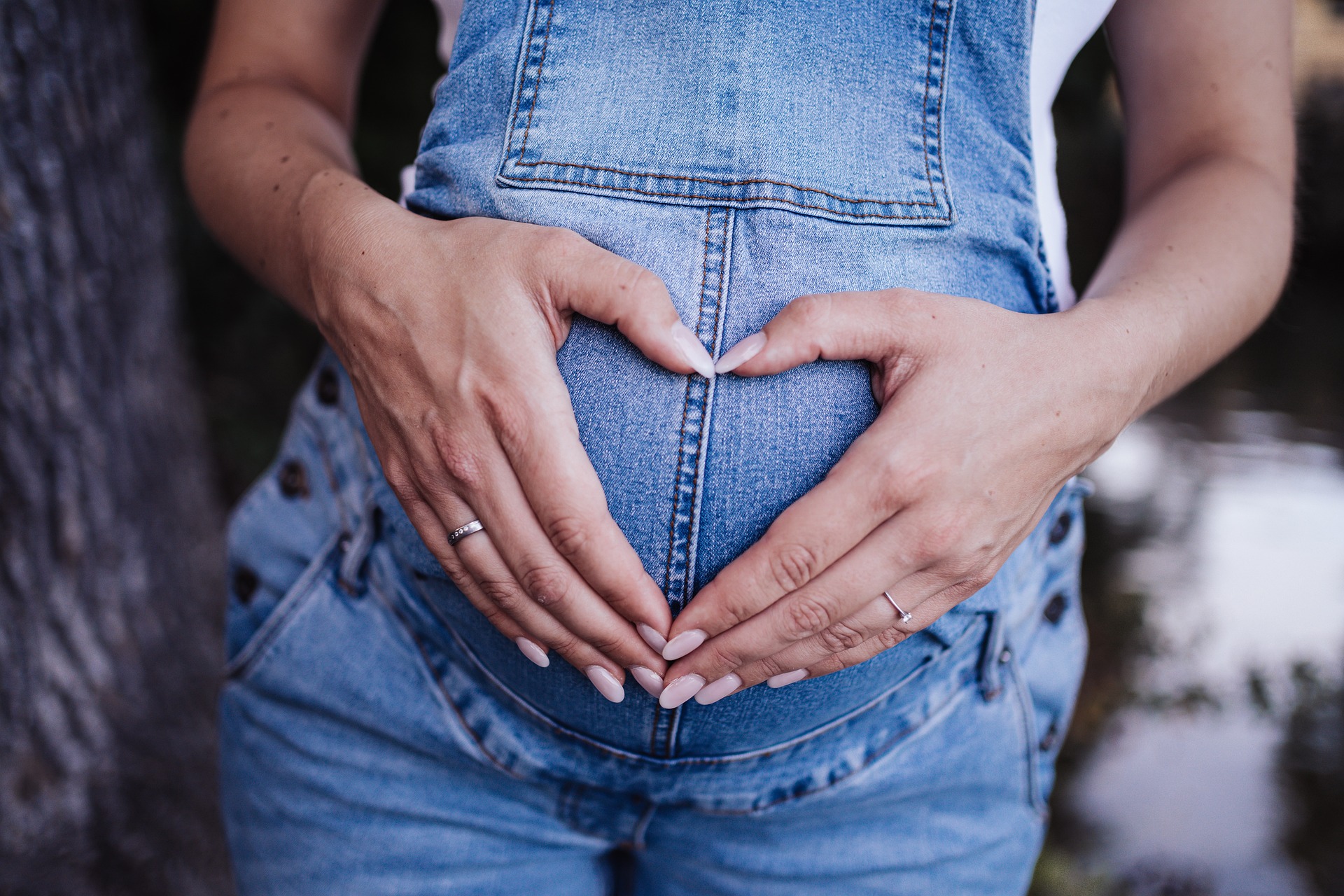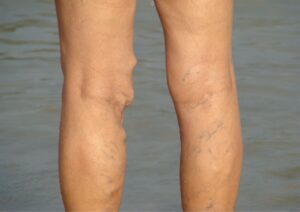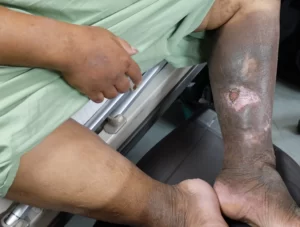Table of Contents
Did you know that varicose veins can affect up to 80% of pregnant women? A family history, longer term pregnancies and advancing age are all risk factors for the onset of these uncomfortable symptoms which typically appear within two to three weeks after conception.
Women who have pre-existing varicose veins may find that their condition worsens during pregnancy. For many women, pregnancy can be the first time they experience this common medical issue.
What are varicose veins?
Varicose veins are abnormal blood vessels which occur when tiny valves become incompetent and have difficulty regulating blood flow, resulting in back flow and pooling of blood in the varicose vein.
Over time, these veins may become quite pronounced, varying in diameter from 3mm to more than 2cm, and will usually appear on legs between the thighs to ankles.
Although most varicose vein cases don’t cause any issues beyond cosmetic concerns, they can be accompanied by itching, pain and swelling as well as more serious life-threatening complications.
It is important to stay vigilant for warning signs and contact a healthcare professional if you notice blood flowing abnormally or any other issues that could indicate varicose veins developing.
Varicose veins during pregnancy are caused by multiple factors?
The most common cause is the increased pressure placed on the abdomen as the uterus expands during the growth of the baby. This extra pressure causes an increase in blood flow through the legs, which can lead to varicose veins when the valves that regulate blood flow become less efficient.
During pregnancy, the enlarged uterus places extra pressure on the pelvic veins and the large vessels in your legs. This increases blood flow through your legs and can cause valves in your leg veins to become less efficient. When this happens, blood can pool in your leg veins and cause them to enlarge and twist.
As a hormone that plays an important role in supporting fetal development, progesterone also has some unique effects on blood vessels. Research has found that when progesterone is released in the body, it causes slower vascular circulation, that accumulates more fluid, leading to enlarged veins and an increase in visible varicosity.
This type of calming effect on the blood vessels can reduce high-blood pressure and, ultimately help with long-term cardiovascular health. In other words, while we may associate progesterone with its links to childbirth, it’s clear this hormone is invaluable for healthy blood vessels too.
Will varicose veins go away after birth?
Varicose veins are a common condition that affects many Australians – especially women during pregnancy. While most cases of varicose veins will resolve within two days of birth, some can still persist.
If you’re facing this issue after childbirth, our vein clinic offers effective treatments to eliminate varicose veins with minimal invasion and downtime.
Do varicose veins increase my risk of other health problems?
Varicose veins are caused by damaged valves within the blood vessels or chronic venous insufficiency, which results in the pooling of blood in the legs.
Despite varicose veins typically not being life-threatening, there can be a number of more serious long-term problems if left untreated.
This includes:
- developing leg ulcers or sores, caused by the prolonged buildup of fluid.
- Bleeding can also occur with varicose veins, due to easily damaged skin over varicose veins and tearing of fragile varicose vessels.
- An increased risk of infection such as cellulitis, a serious bacterial infection of tissue under the skin, due to swelling and pooling of blood in feet and ankles is possible because varicose veins remain untreated.
- Stagnant blood can lead to thrombosis, better known as the formation of blood clots, in both superficial and deep veins.
- Superficial vein thrombosis (SVT) is a condition that arises from varicose veins and weakened or malfunctioning valves which cause disrupted blood circulation. This can lead to swollen, painful veins just beneath the skin’s surface accompanied by tenderness, warmth and swelling; if neglected SVT may result in an ulcer.
- Deep vein thrombosis (DVT) is a potentially dangerous condition, forming in the deeper veins and causing not only discomfort but also pain within the calf muscle alongside vascular signs such as warmth, redness and swelling. Fortunately, if caught promptly with adequate treatment it can be managed before any further risks arise.
Varicose veins can be both uncomfortable and unsightly, but it is important to remember that if addressed, varicose veins can be managed.
How long does it take for varicose veins to go away after pregnancy?
During pregnancy, varicose veins can develop in many women and can cause a lot of discomfort and uneasiness. Fortunately, in the majority of cases these veins start to recede and completely disappear within only three months.
This is a relief to many pregnant women who might be grappling with the physical and mental stress of having to deal with these unsightly veins while they are expecting. However, there may be times when the varicose veins persist even after childbirth and if that is the case, consulting a vascular specialist is recommended.
Your vein doctor can evaluate the severity of your condition and suggest suitable treatment options that will bring lasting relief.
What are some ways to minimise varicose veins in pregnancy?
There are a few things you can do to help minimise varicose veins during pregnancy and postpartum.
- First, aim to get some exercise every day – even just a brisk walk around the block can help improve circulation and blood flow back to the heart. If you’re able to swim, the weightless exercise can be especially beneficial.
- Secondly, elevate your feet and legs as often as possible – when sitting, rest your legs on a stool or ottoman, and when lying down, prop up your feet on a pillow.
- Thirdly, try wearing compression stockings, which can help improve circulation and relieve discomfort from varicose veins. Although tight clothing, high heels, and salt can all contribute to vein problems. Wearing clothing that is tight around your waist, legs, or groin can put pressure on your veins and cause them to become damaged. High heels also put pressure on your veins and can cause them to become damaged.
- Lastly, eating a diet high in salt can cause water retention and swelling, which can also lead to vein damage.
I developed varicose veins in pregnancy. Why do I still have them postpartum?
Varicose veins can be a source of tremendous discomfort during pregnancy, and it is encouraging to know that they eventually disappear after the baby arrives.
Despite this, the condition can linger for those who had it before their first pregnancy. Those whose varicose veins did not appear until after they became pregnant will often find them resolving within 12 weeks following delivery.
This means that taking special measures such as wearing support stockings and avoiding prolonged standing can help in managing the pain and limit discomfort while waiting for the varicose veins to go away.
It is important to keep in mind however, that even after they resolve with time, preexisting varicose veins can appear again with each further pregnancy experienced.
Post-Pregnancy Varicose Veins: What Are my treatment options?
If you’re one of the many women who suffer from varicose veins, you may be wondering if there’s anything you can do to get rid of them. The good news is that there are safe treatment options available, even if you’re breastfeeding.
Researchers suggest waiting six to nine months after giving birth before seeking treatment, as varicose veins often improve on their own during this time. If your veins are still causing discomfort after that period, your doctor may recommend one of several treatment options.
Vein doctors typically provide care for varicose veins and will start with an ultrasound to determine if the deep veins in your leg are functioning properly.
Treatment will be based on the location and severity of your veins and could include any of the following:
- Sclerotherapy: Sclerotherapy involves injecting a saline solution into the vein, which scars and closes it
- Laser treatment: Laser treatment uses focused light to gradually fade smaller veins
- Ambulatory phlebectomy: Ambulatory phlebectomy involves making tiny skin punctures to remove the veins.
These procedures can be done without the need for an overnight stay in hospital. There is also nominal scaring and a quick recovery time associated with these treatments – making them an advantageous option for many patients. Patients won’t need to worry about taking large chunks out of their day to sit around a hospital to have the procedure completed; instead, it can be done quickly, and you can go back to your normal routine afterwards. Treatment performed on an outpatient basis will reduce further stress adding to the appeal of services like these.
FAQ
Can you treat me if I am breastfeeding?
Yes, we understand how important breastfeeding your baby can be. That’s why we offer special care and treatment that is produced with the mum and baby in mind. Our treatments will still help you while being tailored to fit safely around your current arrangement. It doesn’t matter where you are on your breastfeeding routines or goals because we’re here to provide suitable options no matter what stage you might be in. By utilising our services customised to help you on this journey, breastfeeding responsibilities can easily meld with keeping yourself healthy—allowing for effective results both now and into the future.
My veins are causing me pain during my pregnancy – can I receive treatment now?
We do not commonly recommend treatment during a pregnancy. However, we are interested in helping you as soon as three months after delivery, yet will consider each case on an individual basis as everyone’s body is unique.
If the symptoms resulting from varicose veins are very severe or affect your self-esteem, it may be best to address the issue directly prior to getting pregnant with any additional children. Consideration must be paid to your medical needs and other factors that could impact pregnancy.
On the other hand, should you choose to have another baby, then we strongly suggest address the affliction at a later time when pregnancy plans cease. A decision needs to be weighed of whether or not immediate care is required due to the severity of symptoms before proceeding with a further pregnancy.
How soon can I get my veins treated after pregnancy?
Every situation varies, so we typically suggest that patients wait 3 to 6 months before starting treatment. If a patient’s condition is becoming severe, it’s necessary for us to provide relief ASAP. However, even in this instance, we will do our best to have the patient wait and observe their bodies changes to confirm the right treatment approach is being taken. The idea behind this waiting period is to research potential remedies and fully understand what may be causing the issue at hand. We don’t always rush into treatments and gladly provide our professional advice before proceeding with anything further.
What can I do to relieve the symptoms during pregnancy?
Women who are pregnant experience unique demands on their bodies, and they should be mindful of while taking necessary precautions. Wearing compression socks is an easy and effective way to ameliorate the strain that pregnancy can have on veins. Compression tools such as these assist in vanquishing foot pain and fluid retention. For added relief, consider a regular +10 minute walking regimen; this works by allowing the pumping action towards veins and keeping them elastic over time. Be sure to elevate after sitting or standing for prolonged periods to ward off any further wearying effects stemming from swollen ankles. Taking modest steps will make a large impact when it comes to providing some much needed comfort during this special part of a mother’s life.
Resources:
https://www.huggies.com.au/pregnancy/pregnancy-health-care/varicose-veins
https://www.pregnancybirthbaby.org.au/varicose-veins
https://kidshealth.org/en/parents/veins.html










